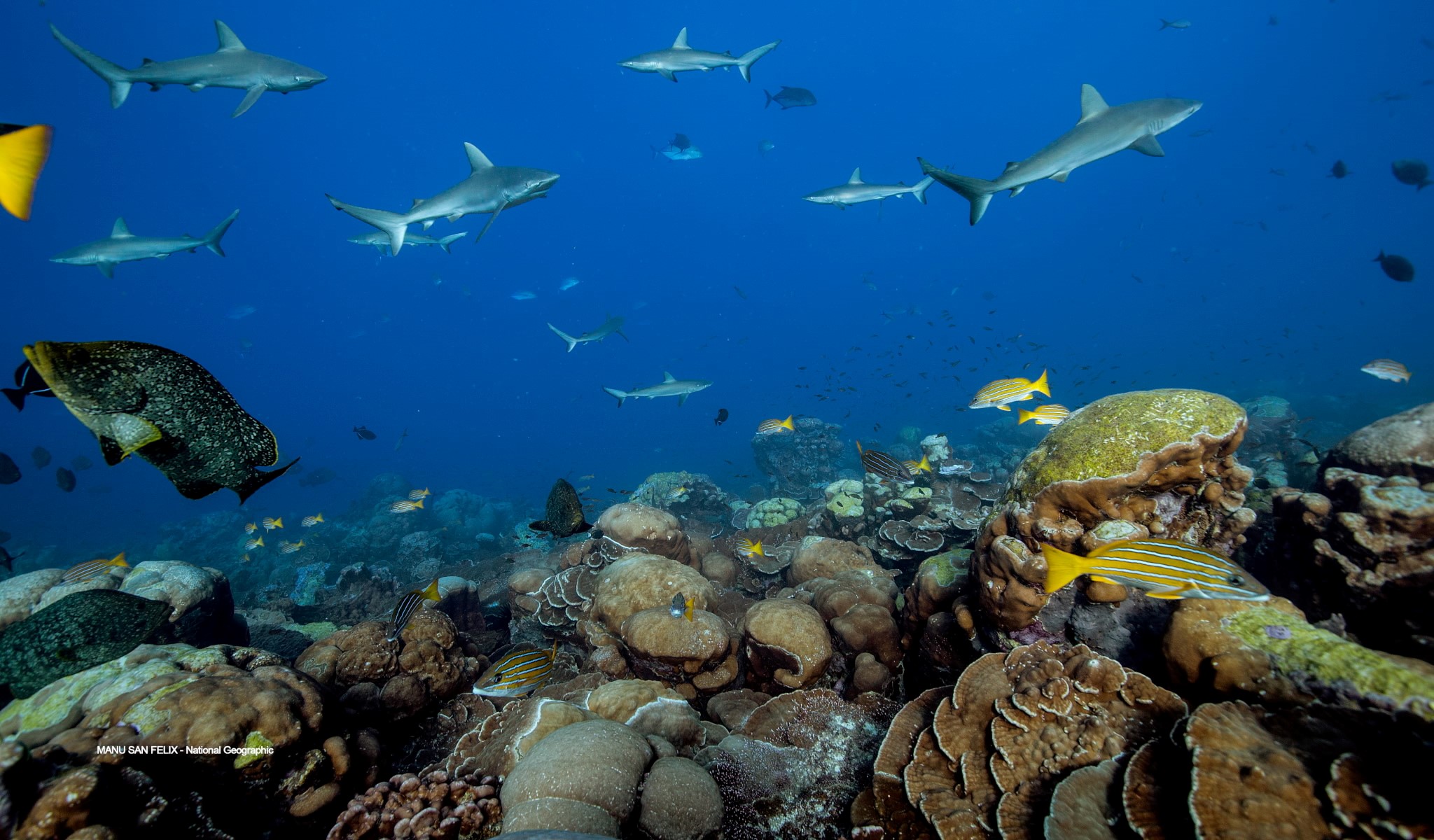.jpg?renditionId=16)
Humpback whales breach in front of a Chilean volcano. Humpback whales have seen a major rebound in numbers-thanks to conservation efforts-from a few hundred left in the 1970s to tens of thousands today. Photo by R. Hucke-Gaete (UACH/CBA).
An international study recently published in the journal Nature that was led by KAUST Professors of Marine Science Carlos Duarte and Susana Agustí lays out the roadmap of actions required for the planet's marine life to recover to full abundance by 2050.
The project brings together the world's leading marine scientists working across four continents, in 10 countries and from 16 universities, including KAUST, Aarhus University, MIT, Colorado State University, Boston University, Pontificia Universidad Catolica de Chile, Sorbonne Université, James Cook University, The University of Queensland, Dalhousie University and the University of York.
"We are at a point where we can choose between a legacy of a resilient and vibrant ocean or an irreversibly disrupted ocean," said Duarte, who is also the Tarek Ahmed Juffali research chair in Red Sea ecology.
"Our study documents recovery of marine populations, habitats and ecosystems following past conservation interventions. It provides specific, evidence-based recommendations to scale proven solutions globally," he added.
Although humans have greatly altered marine life to its detriment in the past, the researchers found evidence of the remarkable resilience of marine life and an emerging shift from steep losses of life throughout the 20th century to a slowing down of losses-and in some instances even recovery-over the first two decades of the 21st century.
.jpg)
Sharks and large marine predators have experienced significant decline, but evidence shows that their stocks can be rebuilt with appropriate protection measures. Photo by Manu San Felix, National Geographic.
The review states that the recovery rate of marine life can be accelerated to achieve substantial recovery within two to three decades for most components of marine ecosystems, provided that climate change is tackled and efficient interventions are deployed at large scale.
"Rebuilding marine life represents a doable grand challenge for humanity, an ethical obligation and a smart economic objective to achieve a sustainable future," said Agusti.

The integrity of reef fish communities adds resilience to coral reefs and facilitates their recovery once pressures are removed. Photo by Manu San Felix, National Geographic.
By stacking a combination of six complementary interventions called "recovery wedges," the report identifies specific actions within the broad themes of protecting species, harvesting wisely, protecting spaces, restoring habitats, reducing pollution and the mitigation of climate change.
The actions recommended include opportunities, benefits, possible roadblocks and remedial actions, giving a tangible roadmap to deliver a healthy ocean that would provide huge benefits for people and the planet.

KAUST Professors of Marine Science Carlos Duarte (right) and Susana Agustí (left) led the recent study in Nature that discusses a roadmap of actions needed for Earth's marine life to recover to full abundance by 2050. File photos.
A key element identified for success is the mitigation of climate change by reducing global greenhouse gas emissions. Impacts from realized and unavoidable climate change already limit the scope for rebuilding tropical corals to a partial-rather than substantial-recovery. The goal of rebuilding the abundance of marine life can only succeed if the most ambitious goals within the Paris Agreement are reached.
Success largely depends on the support of a committed, resilient global partnership of governments and societies aligned with the goal. It will also require a substantial commitment of financial resources, but the study reveals that the ecological, economic and social gains from rebuilding marine life will be far-reaching.

Healthy coral reefs are highly productive and support high biomasses of top predators. Photo by Manu San Felix, National Geographic.
"We have a narrow window of opportunity to deliver a healthy ocean to our grandchildren's generation, and we have the knowledge and tools to do so. Failing to embrace this challenge-and in so doing condemning our grandchildren to a broken ocean unable to support high-quality livelihoods-is not an option," Duarte said.






